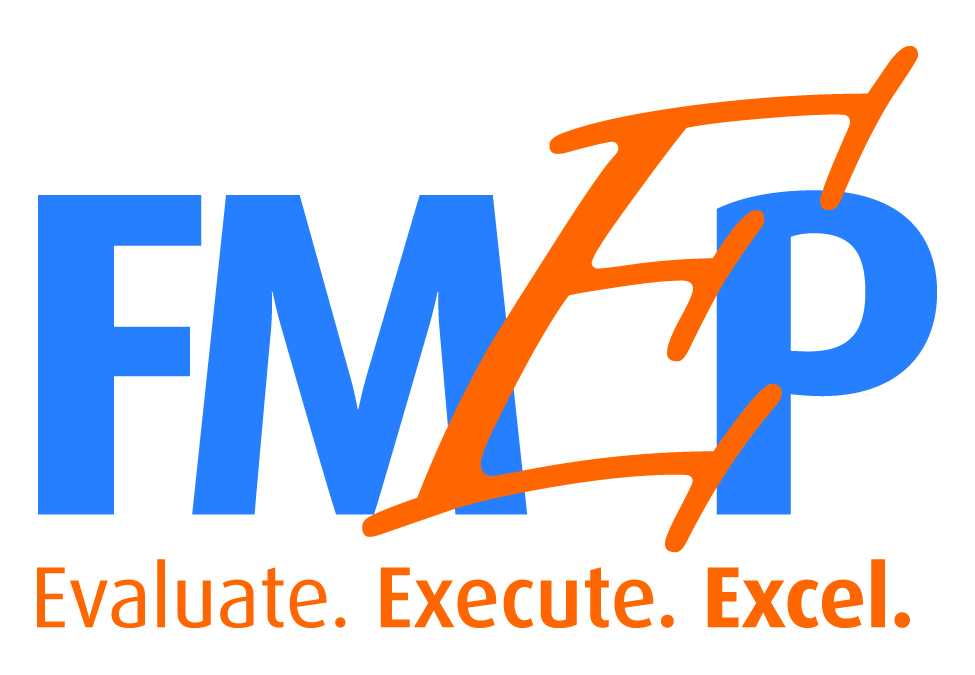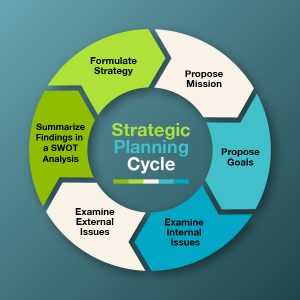“The unexamined life is not worth living.”
Socrates is noted for this statement that he made as a farewell to his students in 399 BC. He had been found guilty by the Athenian court for his teachings and accused of corrupting his students. He was sentenced to death and committed suicide by drinking hemlock.
Socrates claimed that it is only by striving to understand ourselves and questioning our assumptions that we give meaning and value to our lives, and he made the point that it is important to question assumptions and evaluate the “status quo.” This lesson has driven progress for the past 25 centuries. If we look at this idea in terms of our professional responsibilities, we could ask ourselves a few questions to better understand our own organizational performance.
Am I:
- Using resources as effectively as I can?
- Following best practice?
- An effective leader?
- Promoting a department culture of commitment to the institution?
- Using data as a tool?
- Measuring my department’s performance?
- Sustaining my operation under today’s pressures?
Or, am I being swept along by the currents of day-to-day crises?
 If you were asked these questions, would you have the desired responses? What data can you present to support your answers? These are not easy questions to answer, and my experience in performing facilities management (FM) evaluations for APPA members is that many FM organizations get caught off guard when the subject comes up at the executive table. It is important to answer these questions for yourself, before someone else asks them of you. This is especially true now, as we are subjected to greater human resource and financial issues during this time of global pandemic.
If you were asked these questions, would you have the desired responses? What data can you present to support your answers? These are not easy questions to answer, and my experience in performing facilities management (FM) evaluations for APPA members is that many FM organizations get caught off guard when the subject comes up at the executive table. It is important to answer these questions for yourself, before someone else asks them of you. This is especially true now, as we are subjected to greater human resource and financial issues during this time of global pandemic.
More and more we are expected to keep our organizations fine-tuned, well-trained, and competent, incorporating modern technology and methods as appropriate. As a leader, you should be asking these and many other questions of yourself and your facilities team. As an effective fiduciary of university/institution resources, you need to not only know the answers, but also have plans to address deficiencies in your organization with the right solutions.
We are now experiencing an upheaval in our understanding of how to deliver FM services to our institutions, and we are now questioning whether the assumptions and plans of the past are valid in today’s climate. What changes are needed going forward, and what can we learn from 2020 so as not to repeat the same circumstances? This article discusses the importance and use of strategic business planning in the current climate to help us gain a new understanding of how to optimize our performance in the present, how to mitigate the uncertainties we face in the future, and how best to plan for both.
Strategic Planning and the FMEP
 Organizations often use strategic business planning as a tool to build the structure and programs that will produce desired outcomes. The strategic planning process is used to set priorities, focus energy and resources, strengthen operations, and ensure that stakeholders are working toward common goals, establishing agreement around intended outcomes/results and assessing and adjusting the organization’s direction in response to a changing environment.
Organizations often use strategic business planning as a tool to build the structure and programs that will produce desired outcomes. The strategic planning process is used to set priorities, focus energy and resources, strengthen operations, and ensure that stakeholders are working toward common goals, establishing agreement around intended outcomes/results and assessing and adjusting the organization’s direction in response to a changing environment.
The planning process is used to generate goals and initiatives. This is why the process is an extremely valuable source of basic data for the formulation of strategic programs. I’d go further to say that even in the absence of a strategic planning effort, the organization can still produce meaningful data from which to build a solid roadmap to success.
We all know the importance of planning. Businesses are always planning, establishing goals and objectives, and determining strategies for how to reach those goals or to attain a desired future state or vision of their organization.
Above is a typical planning cycle. All six of the steps depict benefit from knowledge of the current enterprise, particularly related to three important aspects:
- Internal factors
- External factors
- SWOT (strengths, weaknesses, opportunities, and threats)
The strategic planning cycle requires the development of information about how the daily processes of the facilities department are managed, tracked, and adjusted. Adjustment is continually needed, since our environmental conditions are usually in transition. This is where understanding internal and external factors and having a SWOT analysis can be valuable. Internal factors include but are not limited to the following items:
- Employee engagement and satisfaction
- Campus master plans
- Risk assessments
- Organizational structure
- Campus condition, age of facilities, and suitability for current uses
- Process management
- Current performance (Facilities Performance Indicators)
- Skill level of the workforce
- Means and methods in use
- External factors include but are not limited to the items below:
External stakeholder expectations and satisfaction
- Campus culture
- Town/gown relationships
- Financial health of the institution
- Local availability of a competent labor pool for hiring
Performing a SWOT analysis draws on the data collected for the above activities. The more information you know about your organization, the more knowledge you can develop to make informed decisions. This is precisely where self-evaluation—and Socrates’ advice—comes into play.
APPA has developed a program to assist member institutions with conducting the Facilities Management Evaluation Program (FMEP). FMEP was designed around the Malcolm Baldrige National Quality Award program but is more closely tailored by APPA to the FM sector, in particular to higher education and K-12. The Malcolm Baldrige Award was developed by the National Institute of Standards and Technology (NIST) of the U.S. Commerce Department. The Baldrige program was designed to meet these seven goals:
- Assist organizations to address a dynamic environment,
- Focus on strategy-driven performance,
- Achieve customer and workforce engagement,
- Improve governance and ethics, societal responsibilities, competitiveness, and create long-term organizational sustainability,
- Offer a comprehensive management approach that focuses on results in all areas,
- Promote organizational and personal learning, and
- Provide for knowledge sharing.
The APPA FMEP
The FMEP builds on the framework of the Malcolm Baldrige criteria. Whereas the Baldrige award resulted from the study of best practices being followed by the best-run U.S. companies, APPA has taken this approach and focused it more on the FM sector. The following are some examples of how FMEP has adapted the Baldrige criteria to fit FM:
- Uses a nomenclature from an FM perspective.
- More direct and easier to manage; focused on FM issues.
- Benefits from accomplished institutional peer evaluators, much like the academic peer review used in our universities and colleges.
- Benefits from a wealth of institutional knowledge contained in APPA standards and the Facilities Performance Indicators (FPI) database for comparisons with other higher education and K-12 institutions.
- Quick and efficient reporting on current status. An independent SWOT analysis
- It can be targeted to specific areas; for example, given the current state of affairs, a review of plans and procedures in light of the COVID-19 impacts could be conducted.
Thinking of the FMEP as a strategic initiative combines the strategic planning process with an organized template based on the attributes that successful higher education and K-12 institutions follow.
The FMEP Process
(with proposed modifications in the time of COVID-19)
Kickoff
The process begins by contacting Holly Judd of the APPA staff and determining the focus of the review. Although the basic scope of work is generally fixed by the seven criteria above, it is still possible to adjust the scale (one or many departments) or the points of interest (e.g., custodial or operations and maintenance). The peer-review team leader is also selected from a list of suggestions made by APPA. Candidates can also be suggested for team membership by the client institution. Additionally, a general time frame for the review and its costs are worked out, as well as contractual terms. This task is completed remotely.
Peer-Review Team Selection
The peer-review teams can be from one to seven (the highest ever used) in number depending on the scope of work. Usually teams are three to four in number. The members are selected from peer institutions and subject to client approval. Clients can make special requests for specific members or members from specific institutions. The team leader works with the client to reach out and find an acceptable team. The team leader then becomes the principle contact for scheduling, communication, and study management. This task is also completed remotely.
Request for Data From the Client
At the conclusion of the kickoff, a self-evaluation is sent to the institution to be filled out prior to the peer-review team site visit. The self-evaluation is available on the APPA website. It covers the details of the review. The review team uses the evaluation to guide its own determination of the client’s department. The team leader will also send a request for data and information to the client. The data request is for information such as organizational charts, budget information, personnel head counts, program descriptions, and other items. The data submittal should be completed at least two weeks prior to the beginning of the site visit. This task is worked out remotely.
Initial Peer-Review Team Data and Review
Prior to the site visit, the review team will examine the data provided and view FPI data (if available at this time); additionally, the data will be assessed. As this review progresses, a better understanding of the client’s departments will be developed, and areas of particular interest identified. Using this information, the team will be better prepared for an informed site visit.
Site Visit by Review Team and Preliminary Feedback
The review team leader plans the site visit with the institution’s contact. The review team visits campus and meets with university leadership, department leadership management staff,
frontline workers, customers, and department peers to assess and collect data and determine employee and customer satisfaction with service and facilities. The meetings are typically in-person and done individually or in small groups. The review team also has an opportunity to tour the campus and make note of the conditions and appearance of grounds and buildings. Finally, the team provides an exit presentation to university/department leadership on the initial findings of the team.
This phase of the effort is up close and personal. As a result of the recent pandemic restrictions and concerns for personal safety of both team members and interviewees, the site visit in its original form may not be either prudent or practical. As a workaround for the site visit, we believe that through careful planning and the use of remote meeting media, such as Zoom or GoToMeeting, the interview process can be arranged and executed acceptably.
This also is true for the exit presentation. The remaining task for the site visit, conducting a site inspection, can be accomplished through a limited one-day visit of one or two team members and an institution guide (preferably a department leader) for a touring day of facilities and grounds. The review team will try to find local (within driving distance) peers to join the review team. This will limit the need for overnight stays and air travel. All protocols for mask use and proper distancing can be adhered to, thus minimizing risks to all participants. Therefore, most of the site visit work can be performed remotely with only minimal onsite, low-impact contact.
Data Review and Draft Report Preparation
Working offsite, the review team begins to collate information into a draft report. Continued dialogue generally occurs with institution staff during this process for additional information and clarification of data. A draft report is generated and sent to the institution for review.
Facilities Team Review and Comment Resolution
Still working offsite, the team addresses all comments and suggestions made by institution staff, fine tunes results, and confirms that all data presented is accurate. The report is then finalized by the peer-review team and presented to the institution and also to APPA for final check and printing.
The Final FMEP Report
The table of contents of a typical report is shown below. A sample report can be viewed on the APPA website.
Contents
I. Overview and Background
II. Introduction
III. Acknowledgments
IV. Executive Summary
V. Evaluation Report and Recommendations
1.0 Leadership
2.0 Facilities Strategic and Operational Planning
3.0 Customer Focus
4.0 Assessment and Information Analysis
5.0 Development and Management of Human Resources
6.0 Process Management
7.0 Performance Results
8.0 Other Considerations
VI. Conclusion
Appendices
The FMEP Report offers many valuable benefits:
- It describes the effectiveness of the organization in the areas mentioned above.
- It provides examples and narrative of individual issues that are both strengths and areas to improve.
- Most importantly, it provides practical recommendations for opportunities to improve or for ways to build on strengths.
- The information developed is tantamount to a SWOT analysis as part of a strategic planning process.
- The review team can also make recommendations on how to sequence recommendations going forward, thus further helping in the planning process.
I’ll leave you with another quote that I believe sums up the self-evaluation effort:
“You cannot change the direction of the wind, but you can adjust the set of the sails to reach your destination.”—Jimmy Dean
Rich Robben is an APPA member emeritus and chief operating officer & owner of True North Facilities Management Consulting, Ann Arbor, MI. He can be reached at [email protected].
To learn more about the FMEP, visit https://www.appa.org/fmep-home/. Contact Holly Judd, APPA’s FMEP administrator, for more information and to discuss an evaluation of your facilities organization.



